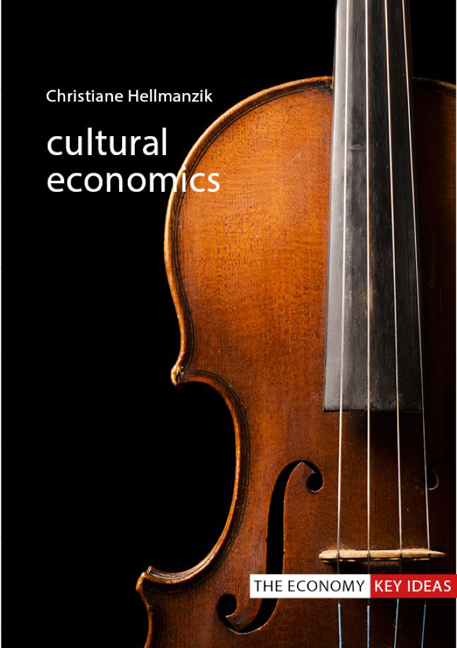Book contents
- Frontmatter
- Contents
- Acknowledgements
- 1 Introducing cultural economics
- 2 Markets, prices and agents
- 3 Society and culture: public provision and institutional aspects
- 4 Demand for culture
- 5 Artists, superstars and creativity
- 6 Quality in the arts and culture
- 7 The organization of cultural industries
- 8 The internet’s impact on cultural sectors
- 9 Globalization’s impact on cultural sectors
- 10 Conclusion
- References
- Index
8 - The internet’s impact on cultural sectors
Published online by Cambridge University Press: 20 December 2023
- Frontmatter
- Contents
- Acknowledgements
- 1 Introducing cultural economics
- 2 Markets, prices and agents
- 3 Society and culture: public provision and institutional aspects
- 4 Demand for culture
- 5 Artists, superstars and creativity
- 6 Quality in the arts and culture
- 7 The organization of cultural industries
- 8 The internet’s impact on cultural sectors
- 9 Globalization’s impact on cultural sectors
- 10 Conclusion
- References
- Index
Summary
Digitization has changed the way we work, conduct our business, trade, communicate, advertise, listen, watch, shop, plan our vacations and so on. When it comes to culture, the key change can be summarized as a massive shift in ownership structures. Such changes can be found on both the supply and demand side: proud owners of record collections have become smartphone owners and Spotify clients; shelves of books have turned into files on an electronic reading device; and a back catalogue of movies and television series can now be streamed on the internet and stored on the cloud, earning their licence holders money as and when a file is downloaded.
Through all these many spheres, the internet has had a massive impact on the ways that a lot of culture is produced and sold across the globe, and also on the way we consume it. Production processes on the supply side and the technological know-how necessary in the industry as well as for the consumer have both changed tremendously over time.
The music industry was hit first, and in many ways the hardest, simply because its content was the easiest to digitize and files could be readily shared on the web. Two main forces impacted the music industry at the same time. First, technological progress gave rise to piracy, with the arrival of peer-topeer (P2P) platforms such as Napster and Piratebay promoting free and illegal access to music across the globe. Meanwhile, the music industry was still grappling with new technologies and developing new business models with which to transition into the digital era. Second, the decreased costs in production and publishing arising from digitization made production much cheaper, lowering the barriers to entry into the market and therefore increasing production.
Moreover, digitization also impacted ownership structures, which in turn changed the consumption patterns and their complementarities on the demand side, as well as opening new avenues for artists to make it in the market and to earn money. An example of such a “complementarity” is the extensive live tours that many artists now undertake to generate additional income.
- Type
- Chapter
- Information
- Cultural Economics , pp. 101 - 118Publisher: Agenda PublishingPrint publication year: 2020



